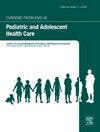帕累托图、散点图和气泡图
IF 3.7
4区 医学
Q1 PEDIATRICS
Current Problems in Pediatric and Adolescent Health Care
Pub Date : 2025-07-01
DOI:10.1016/j.cppeds.2025.101804
引用次数: 0
摘要
数据可视化对于探索潜在的因果关系、确定干预措施的优先级以及交流医疗质量改进方面的发现至关重要。本文使用临床实例来探索三个关键工具——帕累托图、散点图和气泡图——它们可以帮助团队分析系统变量和患者结果。帕累托图使用80/20原则突出了对系统过程和结果最重要的贡献者。我们举例说明他们的使用,以改善抗生素管理的时机在儿科急诊科。散点图揭示了两个变量之间的相关性。使用同样的例子,我们展示了这些图如何评估患者年龄等因素对抗生素给药时间的影响。气泡图通过可视化气泡大小的第三个变量来增强散点图。在这里,我们比较抗生素的时机与每个供应商的多年经验和看到的病人数量。使用这些工具使质量改进团队能够识别趋势,目标干预,并有效地沟通系统性能。定期使用这些工具可以加强质量改进工作和患者预后。本文章由计算机程序翻译,如有差异,请以英文原文为准。
Pareto charts, scatter plots, and bubble charts
Data visualization is essential for exploring potential cause-effect relationships, prioritizing interventions, and communicating findings in healthcare quality improvement. This paper uses clinical examples to explore three key tools—Pareto charts, scatter plots, and bubble charts—that help teams analyze system variables and patient outcomes.
Pareto charts highlight the most significant contributors to a system’s processes and outcomes using the 80/20 principle. We illustrate their use in improving the timing of antibiotic administration in a pediatric emergency department.
Scatter plots reveal correlations between two variables. Using the same example, we show how these plots can assess the impact of factors such as patient age on antibiotic administration timing.
Bubble charts enhance scatter plots by visualizing a third variable through bubble size. Here, we compare antibiotic timing with each provider’s years of experience and number of patients seen.
Use of these tools enables quality improvement teams to identify trends, target interventions, and effectively communicate system performance. Regular practice with these tools can enhance quality improvement efforts and patient outcomes.
求助全文
通过发布文献求助,成功后即可免费获取论文全文。
去求助
来源期刊
CiteScore
4.60
自引率
0.00%
发文量
61
审稿时长
5 days
期刊介绍:
Recognized for its probing, comprehensive, and evidence-based reviews, Current Problems in Pediatric and Adolescent Health Care devotes each issue to a timely and practical topic in pediatric medicine, presented by leading authorities in the field. The journal offers readers easily accessible information that enhances professional experience and is pertinent to daily pediatric practice. Each issue''s review article is accompanied by an additional special feature designed to highlight a particular aspect of the topic presented.

 求助内容:
求助内容: 应助结果提醒方式:
应助结果提醒方式:


